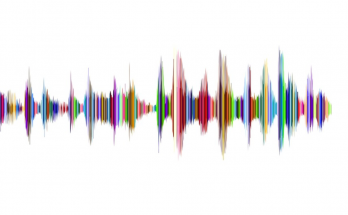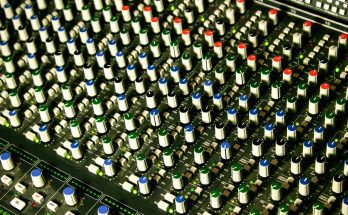When it comes to production there is honestly no more powerful tool than our ears. Every judgment, every decision, comes from how your ear reacts to it. And one of the most useful things our ears (and our brains) can learn to do is compare and contrast. It doesn’t matter if you make hip-hop, rock, metal, electronica, pop, or any other genre, learning how to use reference tracks. The ability to correctly reference will improve the quality of your work whether it’s mixes or masters. But what is a reference track, and how do we use them properly?
What is a reference track?
To put it plainly a reference track is a commercially released track that we use to compare to our own work, that helps inform on a number of different aspects within the our tracks. Think of it a little bit like a map that helps us find where we need to go.
For my personal productions, I like to use reference tracks to fulfill 6 main criteria.
Calibration
While it would be amazing to work within a perfectly treated, neutral-sounding space, realistically a lot of people will be working in less-than-ideal spaces. Listening to a reference track that you know well allows us to understand how to room is colouring the sound, and how to adjust to compensate. Obviously, this should not only be a well-produced song, but also a song that you know well, and know how it should sound.
Instrument Balance
Instrument balance can be very genre-specific, and something that fits one style, might not be the norm for another. Using reference tracks in your chosen style/genre allows you to compare the internal balance between instruments and use that to balance your own track a little better.
Frequency Balance
As well as an internal balance between the instruments, we are also striving for a balance between different frequencies. Some genres are more mid-heavy, while others focus more on the low end. Reference these while mixing, can give you that extra bit of confidence that you are moving in the right direction.
As well as the balance between different frequencies, references can also be used to check the quality of those frequency ranges. The right reference can help show you if your bass is, say, too boomy or weak, or if your mid-range is muddy, etc.
Stereo Imaging
The stereo image is important to give the track a sense of space, and comparing it to proven finish tracks allows you to judge if your own mix is too narrow, too wide, whether it has become unfocused due to panning, etc, as well as where tracks sit on the back to front axis of your mixes.
Volume/ Loudness
While overall volume and loudness is more akin to mastering, using reference tracks to check these things can keep you from exporting mixes that are too hot, but also to judge the overall dynamic range of the mix, to stop it from ending up too squashed.
Perspective
This last one isn’t exactly a must with referencing, it is an added bonus. If you listen to the same track again, and again, and again, you quickly lose perspective over what is good, and what’s bad. Your ears fatigue to the same sound repeated, and that decision you made an hour ago, suddenly doesn’t sound as good. Taking those moments to listen to a couple of reference tracks breaks that up, gives your ear a little excitement, and delays that inevitable fatigue.
How to Use Reference Tracks Properly
Find tracks that are similar in genre, or similar in sound to what you are trying to achieve. While I tend to reference in genre, it is often useful to use something out of genre that you know well. This is also the case if you are looking for say an ‘out of genre’ guitar sound, so you reference something that has that sound you are looking for. This also works with other sonic qualities that you are aiming for such as; tempo, feel, energy, and vibe.
Level-matching your references to your mix also makes it much easier to compare and contrast. Our brains generally tell us that louder is better, even if it isn’t. So, if your mix or your reference is much louder, it will sound better. Also take into consideration Fletcher-Munson Curves, which show us how the ear reacts to loudness at different frequencies. The easiest way to do this is to set your mix to a specific output and then set the references to match. You could do this with a specific LUFS loudness meter, or attempt to roughly match it by ear.
Don’t be afraid to get some plug-ins involved. There are plenty of different plugins that help with metering that can help you analyse your reference tracks in terms of loudness, perceived loudness, frequency curve, phase, and more. You can then measure your own tracks with the same plugins and compare the results. As time goes by, and your ears learn to pick up more than your eyes, you will probably find yourself leaning on plugins less and less, but they’re still good to use if you want to.
Flipping between your track and the reference is the way to go. You can listen to your whole track and then the whole of the reference. OR you can flip between the two section by section or a few seconds of each. All methods work, and whatever is most comfortable with you is the right way to do it.
Stereo is great, but so is mono. Check both your mix and your reference tracks in both Mono and stereo, as they often sound very different, and it lets you further learn how and why things are panned, and the difference between having elements of your mix down the centre, or wider to the left and right. Many different plugins, such as mastering plugins, etc do feature settings that allow you to flip between mono and stereo. These features are also available on some audio interfaces, and on most external hardware monitor controllers, which I would definitely recommend.
Finally, and this might be the most important point, referencing is all about compare and contrast. It isn’t about duplicating something 100%. It’s a tool to home your craft, not something you have to surgically replicate.
And there we have it, now to go and build a strong list of reference tracks for you to use moving forward. Follow the link below to another article, where I list 15 tracks that I like to use when I reference, hopefully they will be just as useful to you, as they are to me.




